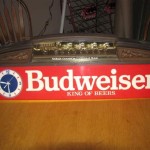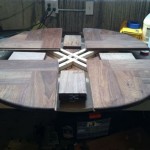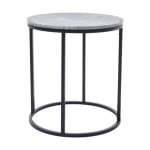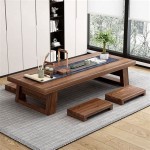Kid Connection 3-In-1 Tabletop Easel: A Comprehensive Overview
The Kid Connection 3-In-1 Tabletop Easel represents a versatile and compact art station designed for young children. This easel aims to foster creativity and artistic development through multiple modes of expression, including drawing, painting, and writing. Its tabletop design offers portability and ease of storage, making it suitable for various environments, from home settings to classrooms.
This article provides a comprehensive overview of the Kid Connection 3-In-1 Tabletop Easel, outlining its key features, functionalities, benefits, and potential drawbacks. The information presented intends to aid parents, educators, and caregivers in making informed decisions regarding its suitability for children's artistic and educational needs. Specific attention will be given to its design, construction, and the range of activities it supports.
Multi-Functional Design and Features
The core strength of the Kid Connection 3-In-1 Tabletop Easel lies in its multi-functional design, offering three distinct surfaces for different artistic mediums. These typically include a dry-erase whiteboard, a chalkboard, and a paper roll feeder. This tri-surface arrangement allows children to seamlessly transition between drawing with markers, writing with chalk, and painting or drawing on paper, providing a diverse range of creative options within a single platform.
The dry-erase whiteboard surface is designed for use with dry-erase markers, which allow for easy cleaning and repeated use. This is particularly beneficial for practicing letters, numbers, and basic drawing skills. The smooth surface facilitates easy marker gliding and erasing, contributing to a positive user experience.
The chalkboard surface provides a traditional medium for drawing and writing using chalk. This surface encourages exploration of different textures and shading techniques. The chalkboard also offers a nostalgic element, reminiscent of classic classroom settings. The use of chalk can enhance fine motor skills development due to the need for precise movements and controlled pressure.
The paper roll feeder accommodates a roll of paper, typically of standard width, allowing for continuous drawing or painting projects. This feature is especially useful for creating larger artworks or for collaborative projects involving multiple children. The paper roll can be easily replaced once it is depleted, ensuring uninterrupted creative flow. The paper roll usually clips or slides into a designated slot, preventing it from unraveling unnecessarily.
Beyond these three primary surfaces, the easel often includes additional features such as built-in storage trays or compartments for holding art supplies like markers, chalk, erasers, and paintbrushes. This integrated storage solution helps keep the workspace organized and prevents clutter. The storage compartments are usually designed to be easily accessible, allowing children to independently retrieve and store their art materials.
The easel's tabletop design contributes to its portability and ease of storage. It can be readily placed on a table, desk, or floor, providing a dedicated art station in various locations. Its compact size allows for convenient storage in closets, under beds, or against walls when not in use. This portability makes it ideal for families with limited space or those who frequently travel.
The frame of the easel is typically constructed from lightweight yet durable materials, such as plastic or wood. The materials used should be non-toxic and safe for children. The frame is designed to provide stability and support for the various surfaces, ensuring that the easel does not easily tip over during use. Depending on the specific model, the frame may fold for even more compact storage.
Benefits for Child Development
The Kid Connection 3-In-1 Tabletop Easel offers numerous benefits for child development, encompassing cognitive, creative, and motor skills. By providing a platform for diverse artistic expression, the easel encourages children to explore their imagination, develop problem-solving skills, and enhance their overall learning experience.
Artistic expression is crucial for fostering creativity and imagination. The easel provides a dedicated space for children to freely express their thoughts, feelings, and ideas through drawing, painting, and writing. This creative outlet can help children develop their unique voices and perspectives. The ability to experiment with different mediums and techniques promotes innovation and originality.
Using the easel can improve fine motor skills and hand-eye coordination. Drawing, writing, and painting require precise movements of the hands and fingers, which strengthens these muscles and improves dexterity. The act of coordinating hand movements with visual input enhances hand-eye coordination, which is essential for various tasks, including writing, drawing, and playing sports.
The structured environment of the easel promotes focus and concentration. Having a designated space for artistic activities can help children learn to focus their attention and concentrate on the task at hand. The easel provides a distraction-free zone, allowing children to immerse themselves in their creative endeavors. This focused engagement can improve attention span and overall cognitive performance.
The easel can be used to support early literacy and numeracy skills. Children can practice writing letters and numbers on the whiteboard or chalkboard, reinforcing their understanding of these fundamental concepts. Drawing and painting can also be used to illustrate stories, count objects, or represent mathematical concepts visually. This integration of art and academics makes learning more engaging and effective.
The easel also provides opportunities for social interaction and collaboration. Children can work together on shared art projects, learning to cooperate, communicate, and compromise. Collaborative art activities foster teamwork and encourage children to share their ideas and perspectives. The easel can become a central point for social interaction and creative exchange.
The act of creating art can be a therapeutic and stress-relieving activity for children. It allows them to express emotions and release pent-up energy in a constructive manner. The easel provides a safe and supportive environment for children to explore their feelings and develop emotional resilience. Art can be a powerful tool for self-expression and emotional well-being.
Potential Drawbacks and Considerations
While the Kid Connection 3-In-1 Tabletop Easel offers many benefits, it is crucial to consider potential drawbacks and limitations before making a purchase. These considerations include the quality of materials, size and portability, maintenance requirements, and age appropriateness. A thorough assessment of these factors can help ensure that the easel meets the specific needs and expectations of the intended user.
The quality of materials used in the easel's construction can significantly impact its durability and longevity. Easels made from flimsy plastic may be prone to breakage, while those constructed from sturdier materials like solid wood are likely to withstand more wear and tear. It is important to examine the materials used in the frame, surfaces, and hardware to ensure they are of acceptable quality.
The size and portability of the easel should be considered in relation to the available space and the intended use. While the tabletop design offers portability, some models may be too large or bulky to easily transport or store. It is important to measure the dimensions of the easel and consider its weight to ensure it is suitable for the intended environment.
Maintaining the cleanliness of the easel is essential for preserving its functionality and appearance. The dry-erase whiteboard and chalkboard surfaces may require regular cleaning to remove marker or chalk residue. The paper roll feeder may also need to be cleaned periodically to prevent dust and debris from accumulating. The cleaning process should be simple and straightforward to encourage regular maintenance.
The age appropriateness of the easel should be carefully considered. While the easel is generally designed for young children, some features may be more suitable for older children with more developed fine motor skills. It is important to assess the child's developmental stage and choose an easel that is appropriate for their abilities. Smaller children might require more supervision to prevent accidents.
The cost of replacement supplies such as markers, chalk, and paper rolls should also be factored into the overall cost of ownership. Some easels may require specific types of markers or chalk that are more expensive than generic brands. It is important to research the availability and cost of replacement supplies before purchasing the easel.
The stability of the easel is a crucial safety consideration. An unstable easel may tip over easily, posing a risk of injury to the child. It is important to ensure that the easel has a sturdy base and is placed on a stable surface. Supervision may be required, especially for younger children, to prevent them from accidentally tipping the easel over.
Finally, it is important to read reviews and compare prices from different retailers before making a purchase. Online reviews can provide valuable insights into the real-world performance of the easel and help identify any potential issues. Comparing prices from different retailers can ensure that one is getting the best possible deal.

Kid Connection 3 In 1 Wood Table Easel

Kid Connection 3 In 1 Wood Table Easel

Kid Connection Double Sided Wooden Tabletop Easel Com

Kid Connection Double Sided Wooden Tabletop Easel Com

Discovery Tabletop Easel 3 In 1 Art Center

Geoffrey S Toy Box Kid Art Tabletop 3 In 1 Led Easel Set Created For Macy

Kid Connection 3 In 1 Wood Table Easel

Artpop Kids 3 In 1 Tabletop Easel Blick Art Materials

Discovery Kids 3 In 1 Tabletop Dry Erase Chalkboard Painting Art Easel Wood Frame Macy S

Kids Art Easel With Paper Roll Double Sided Regulable Drawing Plank Costway








